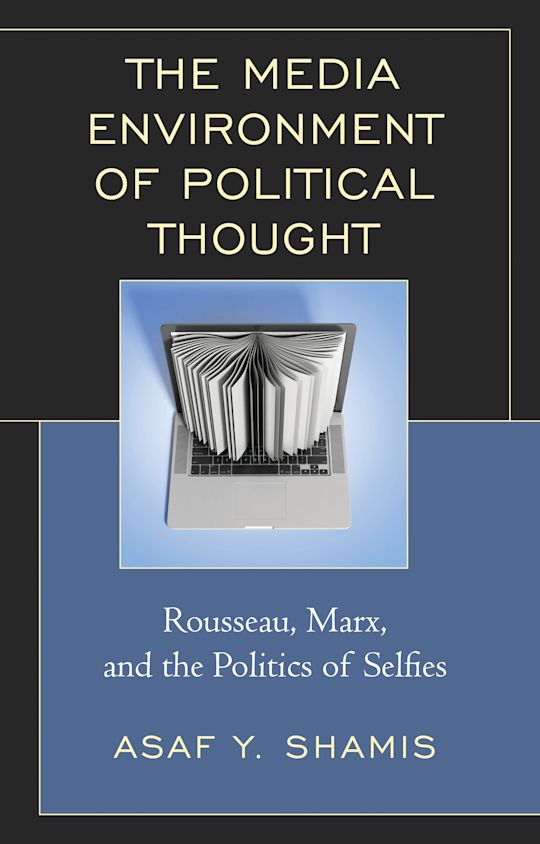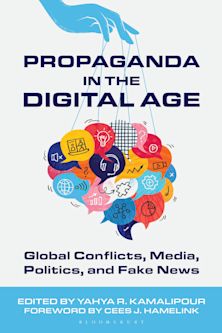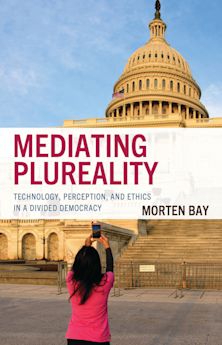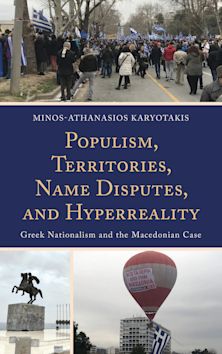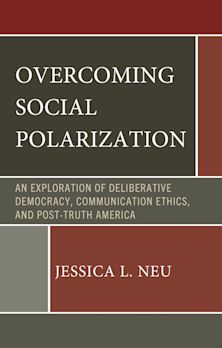- Home
- ACADEMIC
- Communication Studies
- Political Communication
- The Media Environment of Political Thought
The Media Environment of Political Thought
Rousseau, Marx, and the Politics of Selfies
The Media Environment of Political Thought
Rousseau, Marx, and the Politics of Selfies
You must sign in to add this item to your wishlist. Please sign in or create an account
Description
The Media Environment of Political Thought offers a novel way of looking at the tradition of political thought by reconstructing the historical media landscapes in which great political texts of the past were produced. It brings to light the little-charted media environments in which two political innovators—Jean-Jacques Rousseau and Karl Marx—operated and analyzes both how writing systems shaped their intellectual growth, and how they used those systems to communicate their pioneering ideas. The historical analysis is followed by a critical reflection on the future of political thought in the age of computer-mediated communication. Together the three studies presented in the book conjure up a view of the tradition of political thought as highly regulated stream of information shaped by historical writing systems.
Table of Contents
Acknowledgments
Introduction
Chapter One: Theoretical Framework: Writing Systems & Political Thought
Chapter Two: Imprinting the Cry of Nature: Rousseau’s Hidden Media Theory
Chapter Three: The “Industrialists of Philosophy”: Marx, Engels and the Industrialization of Print
Chapter Four: The bios politicos of Selfies
Afterword
Bibliography
About the Author
Product details
| Published | Oct 11 2017 |
|---|---|
| Format | Ebook (PDF) |
| Edition | 1st |
| Extent | 122 |
| ISBN | 9798216316862 |
| Imprint | Lexington Books |
| Illustrations | 5 b/w photos |
| Publisher | Bloomsbury Publishing |
About the contributors
Reviews
-
Shamis (Univ. of Haifa, Israel) says the message of political theory is a combination of historical context and media presentation through which that historical context is presented. Rousseau and Marx might be understood differently if media presentation were taken into view instead of simply words on the page. How would revolution be seen differently if the media context was seen as part of the message? Ideas are not born in a media vacuum, so the media environment is part of the message. Media improvements go along with political revolutions, Shamis says. Intimate, personal, social, and public space are the contexts in which all media and all theory resides. This “selfie” environment is professional and private, and must be seen as part of the theory being discussed. These contexts make way for a hyperpersonal politics. To really understand political theory, we need to go back to and include the media environments in which all theory resides. This book is a wonderful second layer for readers. Once the written context is established, the addition of a media context results in a better understanding and richer presentation. Summing Up: Recommended. Upper-division undergraduates through faculty
Choice Reviews
-
The Media Environment of Political Thought proposes that revolutionary political thought and new media technologies exist in a dialectical relationship. By demonstrating how the material production of the text itself is imbricated in the expression of ideas, their circulation and reception, Shamis provides a much-needed and original approach to reading political theory. Written with great clarity and precision, the book deftly moves from Rousseau and Marx to our current moment of networked digital dissemination.
Alyson Cole, The Graduate Center, City University of New York
-
The Media Environment of Political Thought is an unusually insightful work and deals with matters of great importance to our society. It fruitfully combines approaches derived from the study of political thought with those developed by scholars in the field of media studies, and richly deserves a large audience.
Jack Jacobs, City University of New York








